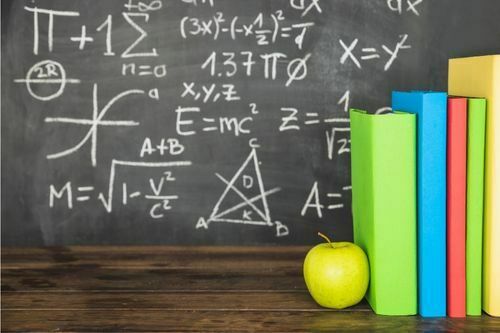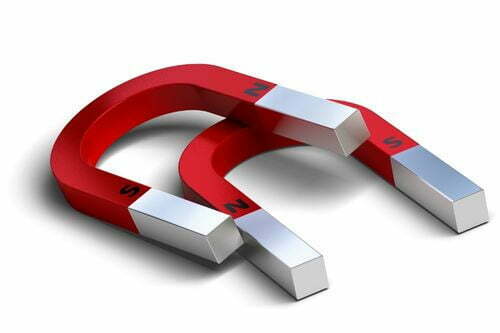Table of Contents
- Class 12th physics syllabus table
- Unit 1 – Electrostatics
- Unit 2- Current electricity
- Unit 3- Magnetic effects of current and magnetism
- Unit 4- Electromagnetic induction and alternating current
- Unit 5- Electromagnetic waves
- Unit 6- Optics
- Unit 7- Dual radiation and matter
- Unit 8- Atoms and nuclei
- Unit 9- Electronic devices
- Class 12th physics practicals
- Key takeaways
- FAQs
The 12th standard CBSC studies can be overwhelming and stressful. The physics of the class 12th has an extract of everything you have studied in the school years. The class 12th physics syllabus includes all the topics that will prepare you for future studies.
Class 12th physics syllabus table

The CBSC board has declared the syllabus for class 12th physics for 2022-23. It is pretty similar to the last year’s syllabus. It has 9 units and 14 chapters for you to study. The theory exam will have 70 marks and 30 minutes to solve them.
In this article, we will briefly learn about the syllabus chapters. It also has the list of practicals you need to perform. First, let’s look at the list of the units and chapters in the class 12th physics syllabus.
| Units | Chapters | Marks |
| 1- Electrostatics | Electric charges and fieldElectrostatics potential and capacitance | 16 |
| 2- Current electricity | Current electricity | |
| 3- Magnetic effects of current and magnetism | Moving charges and magnetismMagnetism and matter | 17 |
| 4- Electromagnetic induction and alternating current | Electromagnetic inductionAlternating current | |
| 5- Electromagnetic waves | Electromagnetic waves | 18 |
| 6- Optics | Ray optics and Optical instrumentsWave Optics | |
| 7- Dual radiation and matter | Dual nature of radiation and matter | 12 |
| 8- Atoms and nuclei | AtomsNuclei | |
| 9- Electronic devices | Semiconductor electronics: material, devices, circuits | 7 |
Unit 1 – Electrostatics
Chapter 1- Electric charges and field
This chapter covers the concept of electric chargers we encounter every day.
The elements of this chapter are as follows.
- Electric charges
- Conservation of charges
- Coulomb’s law force between two-point charges
- Forces between multiple charges
- Electric field due to point charges
- Electric flux
- Statement of Gauss’s theorem and its applications
Chapter 2- Electrostatics potential and capacitance
This chapter deals with the potential and kinetic energy. The elements are as follows.
- Electric potential
- Equipotential surfaces
- Conductors and insulators
- Dielectrics and electric polarization
- Capacitors and capacitance
- Combination of capacitors in series and parallel
- Capacitance of a parallel plate capacitor
Unit 2- Current electricity
Chapter 3- Current electricity
It studies the flow of current and different charges. The topics of this chapter are as follows.
- Electric current, the flow of electric charges in a metallic conductor
- Drift velocity, mobility
- Ohm’s law
- V-I characteristics
- Electrical energy and power
- Electrical resistivity and conductivity
- Internal resistance of a cell, potential difference
- Kirchhoff’s rules
- Wheatstone bridge
Unit 3- Magnetic effects of current and magnetism

Chapter 4- Moving charges and magnetism
You will learn about the moving charges, which is electricity and magnetism in this chapter. The elements of this chapter are as follows.
- Concept of a magnetic field.
- Biot- Savart law and its application.
- Ampere’s law and applications to an infinitely long straight wire.
- Straight solenoid, force on a moving charge in uniform magnetic and electric fields.
- Force on a current-carrying conductor in a uniform magnetic field
- Definition of an ampere, torque experienced by a current loop in a uniform magnetic field.
- Current loop as a magnetic dipole and its magnetic dipole moment.
Chapter 5- Magnetism and matter
It studies the phenomena of magnetism beyond the magnets. The elements of this chapter are as follows.
- Bar magnet
- Magnetic field intensity due to a magnetic dipole.
- Torque on a magnetic dipole in a uniform magnetic field.
- Magnetic field lines.
- Magnetic properties of materials- Para-, dia- and ferromagnetic substances, with example.
- Magnetization of materials.
Unit 4- Electromagnetic induction and alternating current
Chapter 6- Electromagnetic induction
This chapter discusses the interrelation between electricity and magnetism. The elements of this chapter are as follows.
- Electromagnetic induction
- Faraday’s laws, induced EMF and current
- Lenz’s Law
- Self and mutual induction.
Chapter 7- Alternating current
It studies the types of voltages in AC and DC sources. The topics of this chapter are as follows.
- Alternating currents, peak and RMS value of alternating current
- Reactance and impedance
- LCR series circuit, resonance, power in AC circuits, power factor
- AC generator
- Transformer
Unit 5- Electromagnetic waves
Chapter 8- Electromagnetic waves
The chapter discusses the need for displacement current and its consequences. The topics of this chapter are as follows.
- Basic idea of displacement current
- Electromagnetic spectrum
Unit 6- Optics
Chapter 9- Ray Optics and Optical instruments
You will study the functioning of our eyes and our sense of vision. The topics of this chapter are as follows.
- Ray Optics
- Magnification, power of a lens
- Refraction and dispersion of light through a prism.
- Scattering of light – the blue color of the sky and reddish appearance of the sun
- Optical instruments- Microscopes and astronomical telescope
Chapter 10- Wave Optics
You will learn about the corpuscular model light in this chapter. The elements of this chapter are as follows.
- Wave optics- Wave front and Huygen’s principle
- Proof of laws of reflection and refraction using Huygen’s principle.
- Young’s double slit experiment and expression for fringe width, coherent sources, and sustained interference of light.
Unit 7- Dual radiation and matter
Chapter 11- Dual nature of radiation and matter
This chapter studies the equations of electromagnetism. The topics of this chapter are as follows.
- Dual nature of radiation.
- Photoelectric effect.
- Hertz and Lenard’s observations.
- Einstein’s photoelectric equation-particle nature of light.
- Experimental study of the photoelectric effect.
- Matter waves-wave nature of particles, de-Broglie relation.
Unit 8- Atoms and nuclei
Chapter 12- Atoms
You will learn about the discovery of the atom and the hypothesis about it. The topics of this chapter are as follows.
- Alpha-particle scattering experiment.
- Rutherford’s model of the atom.
- Bohr model of the hydrogen atom.
- Expression for the radius of the possible orbit.
Chapter 13- Nuclei
It studies the formation and structure of a nucleus. The elements of this chapter are as follows.
- Composition and size of nucleus, nuclear force mass-energy relation
- Binding energy per nucleon
- Nuclear fission.
- Nuclear fusion.
Unit 9- Electronic devices
Chapter 14- Semiconductor electronics: material, devices, circuits.
This chapter includes the technology behind electronic devices. The elements of this chapter are as follows.
- Energy bands in conductors
- Semiconductors and insulators
- Intrinsic and extrinsic semiconductors- p and n-type, p-n junction
- Semiconductor diode – I-V characteristics in forwarding
- Reverse bias application of junction diode -diode as a rectifier.
Class 12th physics practicals
Along with the theory, you will need to perform several practicals and experiments to score high in the exams. They have two sections. The list of practicals and experiments is as follows.
| Section A |
| Experiments | Practicals |
| To determine the resistivity of two / three wires by plotting a graph between potential difference versus current. | To measure the resistance and impedance of an inductor with or without an iron core. |
| To find the resistance of a given wire / standard resistor using a meter bridge. | To measure resistance, voltage (AC/DC), and current (AC), and check the continuity of a given circuit using a multimeter. |
| To verify the laws of combination (series) of resistances using a meter bridge. or To verify the laws of combination (parallel) of resistances using a meter bridge | To assemble a household circuit comprising three bulbs, three (on/off) switches, a fuse, and a power source. |
| To determine the resistance of a galvanometer by half-deflection method and to find its figure of merit. | To assemble the components of a given electrical circuit. |
| To convert the given galvanometer (known resistance and figure of merit) into a voltmeter of desired range and to verify the same. | To study the variation in potential drop with a length of a wire for a steady current. |
| To find the frequency of AC mains with a sonometer. | To draw the diagram of a given open circuit comprising at least a battery, resistor/rheostat, key, ammeter, and voltmeter. |
| Section B |
| Experiments | Practicals |
| To find the value of v for different values of u in the case of a concave mirror and to find the focal length. | To identify a diode, an LED, a resistor, and a capacitor from an eclectic collection of such items. |
| Using a convex lens, find the focal length of a convex mirror. | Use a multimeter to see the unidirectional current flow in the case of a diode and an LED and check whether a given electronic component is in working order. |
| To find the focal length of a convex lens by plotting graphs between u and v or between 1/u and 1/v. | To study the effect of intensity of light on an LDR. |
| To draw the I-V characteristic curve for a p-n junction in forwarding and reverse bias. | To observe refraction and lateral deviation of a beam of light incident obliquely on a glass slab. |
| To determine the angle of minimum deviation for a given prism by plotting a graph between the angle of incidence and the angle of deviation. | To observe diffraction of light due to a thin slit. |
| To determine the refractive index of a glass slab using a traveling microscope. | To study the nature and size of the image formed by an (i) convex lens, (ii) concave mirror on a screen by using a candle, and a screen |
Key takeaways
- The NCERT declared the class 12th physics syllabus for 2022-23.
- The official website of NCERT has the number of periods you will require to take to study the syllabus.
- The experiments and practicals are for 30 marks.
We hope you find this article helpful. Write us your comments. Click here to read more such articles.
Liked this blog? Read next: Concepts of physics that everyone should know of!
FAQs
Q1. What is the best reference book for class 12th physics?
Answer: Fundamentals of physics by Halliday, Resnick, and Walter is the best reference book for class 12th physics.
Q2. How many chapters are there in class 12th chemistry?
Answer: There are 16 chapters in the class 12th chemistry syllabus.
Q3. Is physics easy?
Answer: Class 12th physics can be challenging for you if you don’t understand its concept.






